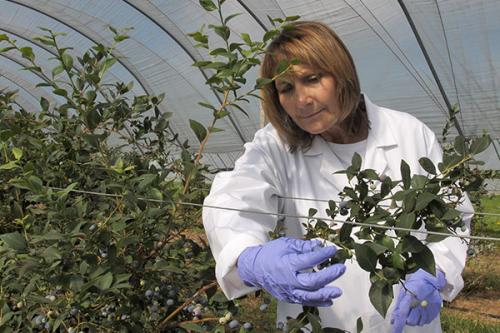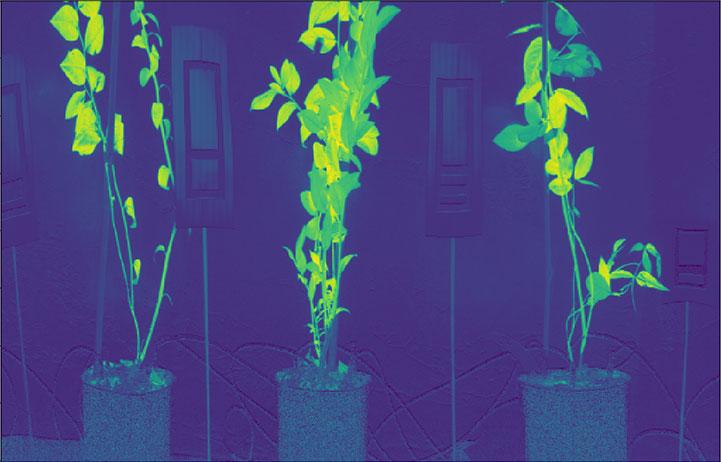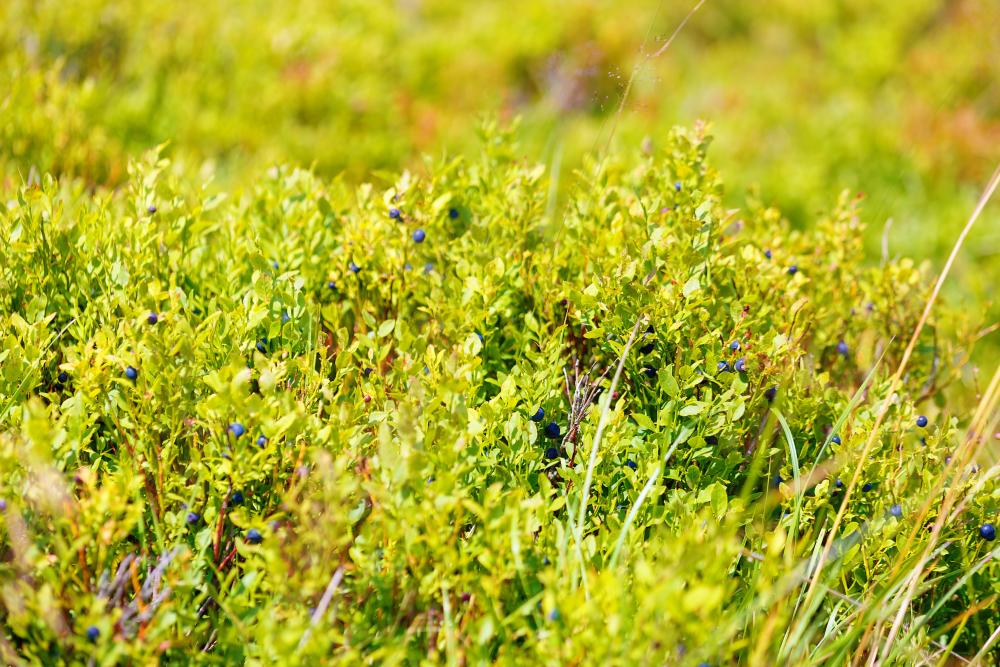
Blueberries have gained in popularity amongst UK consumers over the last decade due to their convenience, flavour and many recognised health benefits. Currently UK blueberries supply only 5% of demand and there is a huge opportunity to increase home grown supply. To achieve this objective, cultivars better adapted to local growing conditions and that meet the expectations of UK consumers are urgently required. To address these needs, we have developed a new blueberry breeding programme in Scotland applying cutting edge molecular, bioinformatic and physiological tools where we aim to develop cultivars best adapted to the local climate.
Stage
Work in ProgressDirectory of Expertise
Purpose
In recent years blueberries have grown in popularity amongst UK consumers, driven by an awareness of their many recognised health benefits, convenience and flavour.
Blueberries contain phenolic compounds, which are linked to improved night-vision, anti-cancer activity, inhibiting degenerative eye conditions and reducing the risk of heart disease.
In 2017, demand reached record levels with UK sales valued at £330 million, making blueberries one of the most popular berries amongst UK shoppers.
So far this rising demand has not been followed by UK-based supply; home-grown blueberries supply only 5% of the UK market and this shortfall is met by imports from elsewhere.
UK blueberry growers are reliant upon cultivars based predominantly on parental plants from North America. These are often not suited to the UK climate and market.
To capitalise on this clear market opportunity, the Scottish and UK industry need improved management techniques and, in the medium term, the development of UK adapted cultivars that provide a consistent, high yielding, good quality crop over an extended growing season.
UK blueberry growers also face significant year-to-year fluctuations in their blueberry yields. This is one of the key barriers for successful and profitable blueberry production. This instability prevents blueberry growers accurately predicting production and profit, resulting in volatility of the UK supply.
The changing UK climate presents additional challenges to blueberry production. There are already indications that the trend towards warmer winters in UK and Europe is affecting the dormancy cycle and subsequent fruit development of some berry crop species.
Sustained growth of the blueberry market therefore depends on innovation and consistent availability of new varieties. We are applying the latest scientific techniques to innovate and inform the UK fruit industry on how to develop better blueberries for the future.
Results
We previously identified yield instability as one of the key barriers for successful and profitable blueberry production. The problem is now well recognised within industry, although the causes of this variation were previously unknown.
We have now been able to identify several factors limiting yield. Our results indicate that variable light availability between seasons is a key driver of yield instability.
This has allowed us to provide growers with improved management options, in particular to maintain appropriate pruning and maintain clean polytunnels to maximise light capture and photosynthesis.
Over the last three years selections of cultivars, which have shown promise for agronomic traits of interest to the UK market (size, season, and taste), have been used in a UK breeding programme with over 8000 seedlings developed for initial evaluation.
We are now deploying a technique called marker-assisted selection, which helps breeders to accelerate the selection of parental plants for crosses and eliminate offspring with undesirable traits before they are planted in the field.
We are also using other innovative technologies to rapidly identify desirable plant traits. For example hyperspectral imaging records signals invisible to the human eye. Such signals can be used as an early warning to detect plant stress responses such as those experienced under drought or pest infestation before symptoms become apparent.

Furthermore, using these technologies, we can screen thousands of plants to detect differences in stress and therefore potentially yield. This will allow us to identify plants which have established well, and require less costly inputs and also modify the management regime in those that may be showing stress responses.
To optimise the development of locally adapted varieties, we are aiming to broaden the gene pool by looking at native wild blaeberries (Vaccinium myrtillus) in the hope of transferring beneficial traits, such as higher anthocyanin content (an antioxidant beneficial to human health), plant vigour, fruit colouring and seasonality into the commercial blueberry (Vaccinium corymbosum).

Benefits
Our research is providing crucial Information to the UK soft fruit industry in minimising yield variability and providing practical guidance to growers. Our work is also informing the development of new varieties that are better suited to the UK climate.
If these new varieties can be successfully introduced then the proportion of UK demand met by UK growers could rise to 50% and contribute around £100 million a year to the UK economy.
Our research has developed knowledge of the performance of currently available germplasm in the UK, and identified molecular breeding tools, such as markers linked to genes and traits of commercial interest for both the fresh and processing markets.
These markers will be utilised in a breeding programme to reduce timescales for the development of commercially useful germplasm.
Project Partners
- Thomas Thomson Ltd
- Casleton Farm Ltd
- Soil Essentials
- Agriculture and Horticulture Development Board
- S&A Produce plc
- Delta-T Devices
- Marks & Spencer plc
- Berry Gardens
- Total Produce
Documents
Research Papers
- Photosynthetic limitation as a factor influencing yield in highbush blueberries (Vaccinium corymbosum) grown in a northern European environment
- A method for automatic segmentation and splitting of hyperspectral images of raspberry plants collected in field conditions